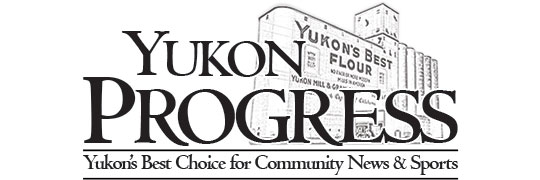

By Michael Pineda
Staff Writer
The Fort Reno Visitor’s Center and Museum is ready to reopen but could use a little help in the process.
Historic Fort Reno, Inc. President Marie Hirst said plans are in place to open on June 1.
To help keep doors open, the board needs volunteers and financial support as it recovers from an extended closure.
The center has been closed for almost three years due to COVID-19 regulations put in place by the federal government. The land is owned by the United State Department of Agriculture.
“You can’t blame the USDA for that,” she said. “It is part of their protocol. Because the United States government controls the facility, they have certain requirements. Due to regulations set by the government, we had to stay closed and so did the other museum (Calvary Museum).
“We didn’t have enough funds to keep a full-time director on staff. There were no grants to apply for at the time. All funding is based on donations, and when you don’t have any functions, you can’t generate money.”
Visitor center director Wendy Ogden works full-time for Hirst in the Canadian County Court Clerk’s office. Hirst said she had needed a full-time job and given her knowledge of the fort, it is hoped one day she can work in the center on a full-time capacity.
“Right now, we need volunteers until we can generate funds for people that work out here,” she said.
Plans call for the center to be open from 10 a.m. to 4 p.m. Tuesday through Saturday, depending on how much help the center can get.
“The visitor center museum has a wide range of information about the fort from 1874 to the late 1940s,” Hirst said. “That was when the fort was turned over to the USDA and turned into a research facility.

The fort is located on 10,000 acres. Of that land, 3,000 acres were turned over to the Federal Correctional Institution and 7,000 to the USDA.
Hirst said the fort began as an cavalry encampment, with building construction starting in 1875 and 1876. The center served as the fort veterinarian’s home.
Hirst pointed out there is a lot of history at the fort that extends beyond Native Americans, cavalry and the Buffalo Soldiers.
Among the recognizable names associated with the fort are famous scout Ben Clark, who rode with Col. George Custer and the 7th Calvary. Clark is buried in the fort’s historic cemetery. While living at Fort Reno with his family, Clark hosted famed artist Frederic Remington, who produced many drawings during his three months there.
Will Rogers visited the fort along with Amelia Earhart. Black Jack, the ceremonial horse used in the funeral processions of Presidents Herbert Hoover, John F. Kennedy and Lyndon B. Johnson, along with General Douglas MacArthur, was raised and trained at Fort Reno. The fort also served as a prisoner of war camp during World War II.


“It was a remount station in World War I and World War II,” Hirst said. “Thousands of horses and mules were trained there. It is overwhelming how much history is there. Two of the land runs started there. It is just a plethora of history that we cannot lose and we need to teach our children.”
Hirst said volunteer opportunities would be ideal for college students who like history, in addition to veterans who enjoy talking about history and visiting with people.
“We need help with reenactments and things like that,” Hirst said. “We are reaching out for help.”
One of the first big events planned for the visitor’s center and museum is a ghost tour set for June 25.
“We invite the public to come out; we have so much fun with the ghost tours,” she said.
The Fort Reno Visitor’s Center and Museum is located at 7107 Cheyenne Street in El Reno. To find out more about volunteer and donation opportunities, call Hirst at (405) 388-2837 or address letters to Historic Ft. Reno, Inc., P.O. Box 1366, El Reno, Oklahoma, 73036.







